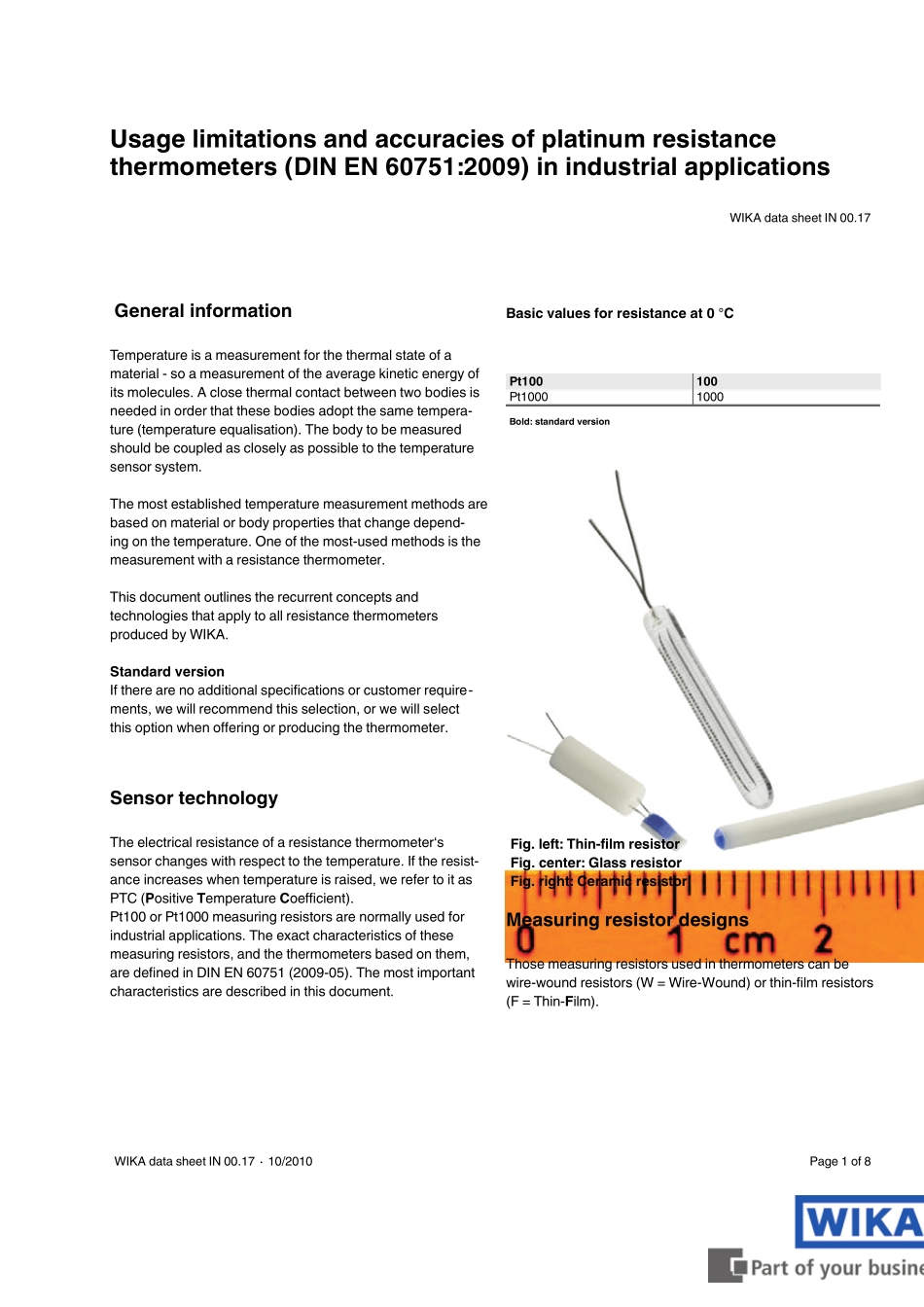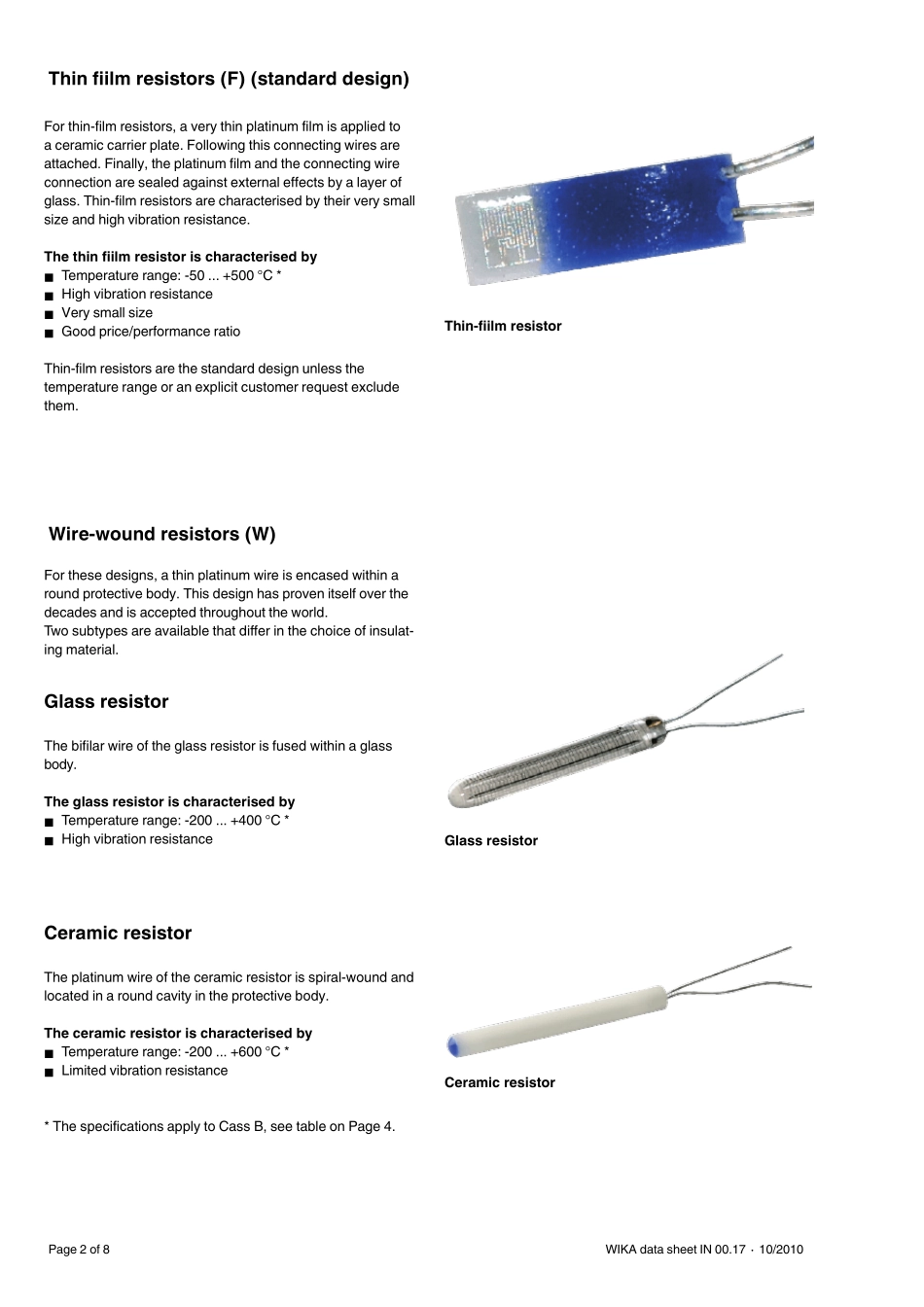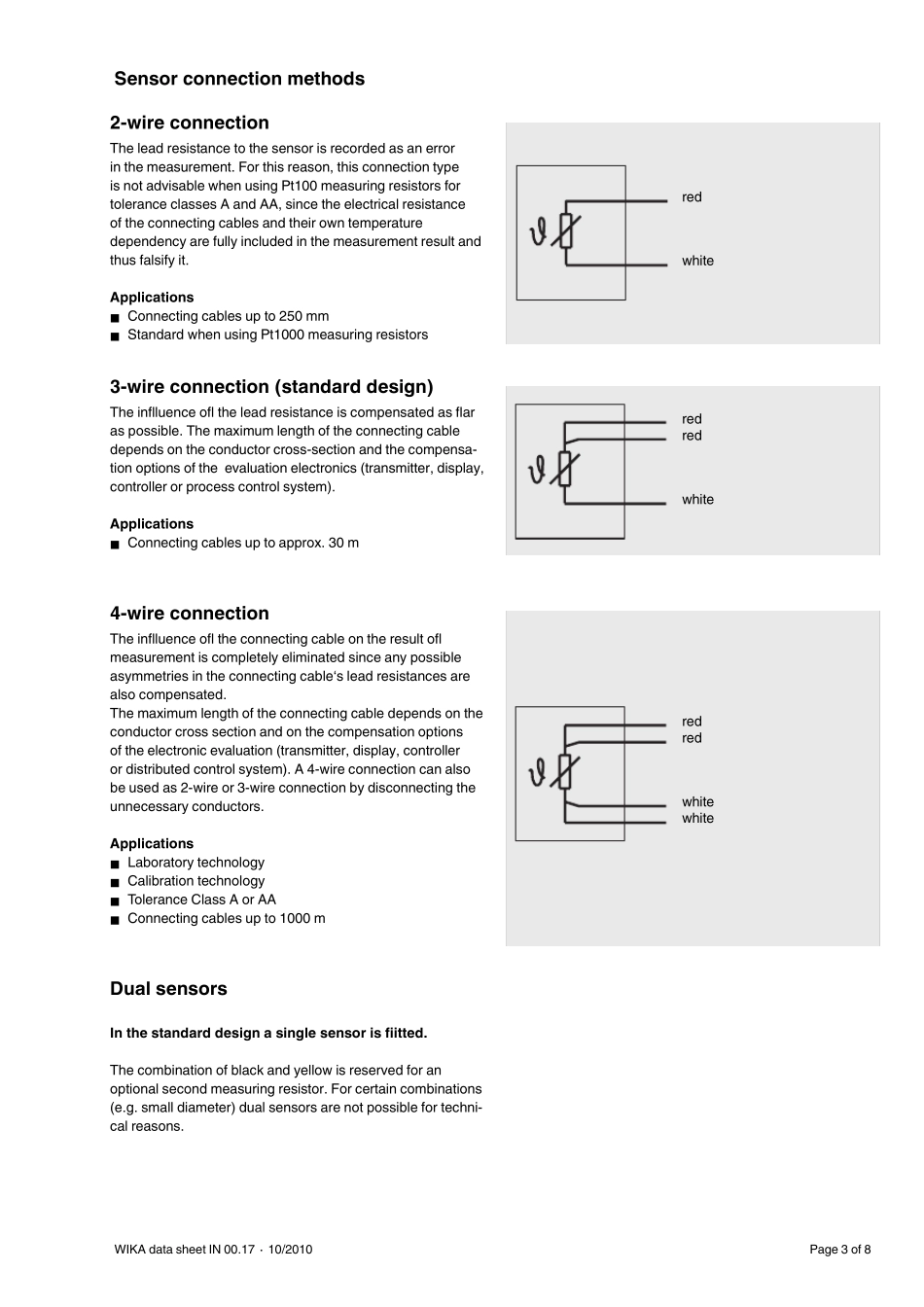Usage limitations and accuracies of platinum resistance thermometers (DIN EN 60751:2009) in industrial applicationsWIKA data sheet IN 00.17Page 1 of 8WIKA data sheet IN 00.17 ∙ 10/2010General informationTemperature is a measurement for the thermal state of a material - so a measurement of the average kinetic energy of its molecules. A close thermal contact between two bodies is needed in order that these bodies adopt the same tempera-ture (temperature equalisation). The body to be measured should be coupled as closely as possible to the temperature sensor system. The most established temperature measurement methods are based on material or body properties that change depend-ing on the temperature. One of the most-used methods is the measurement with a resistance thermometer. This document outlines the recurrent concepts and technologies that apply to all resistance thermometers produced by WIKA.Standard versionIf there are no additional specifications or customer require-ments, we will recommend this selection, or we will select this option when offering or producing the thermometer.Sensor technologyThe electrical resistance of a resistance thermometer‘s sensor changes with respect to the temperature. If the resist-ance increases when temperature is raised, we refer to it as PTC (Positive Temperature Coefficient).Pt100 or Pt1000 measuring resistors are normally used for industrial applications. The exact characteristics of these measuring resistors, and the thermometers based on them, are defined in DIN EN 60751 (2009-05). The most important characteristics are described in this document.Basic values for resistance at 0 °CPt100100Pt10001000Bold: standard versionMeasuring resistor designsThose measuring resistors used in...


